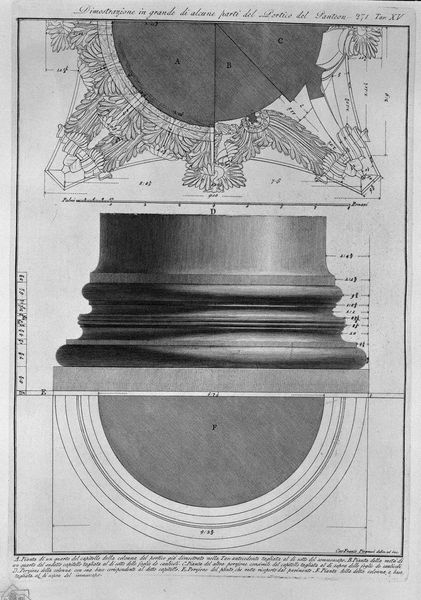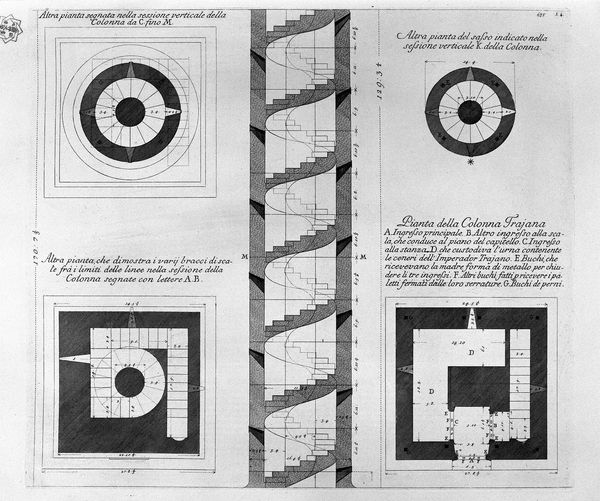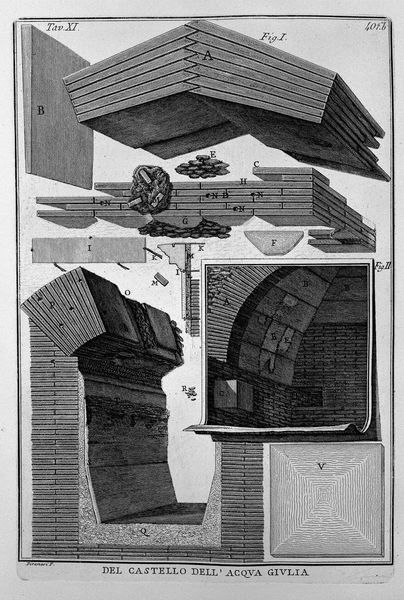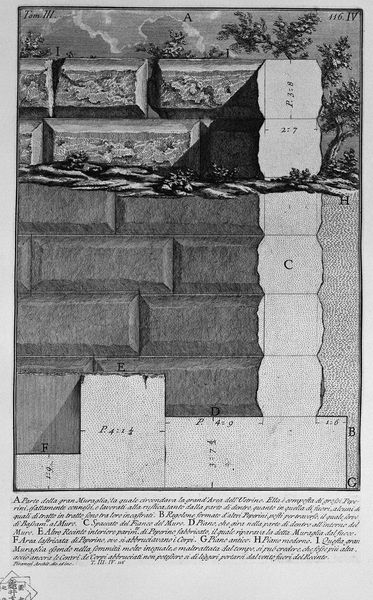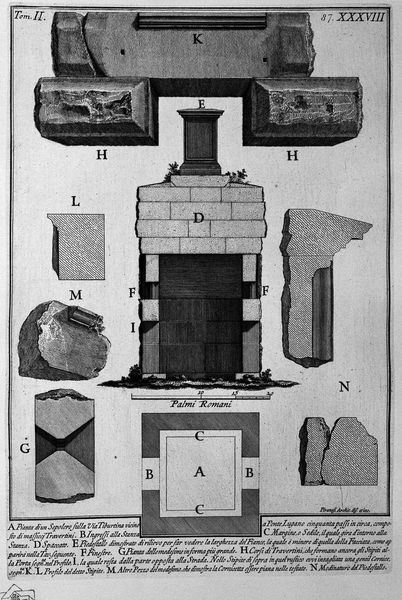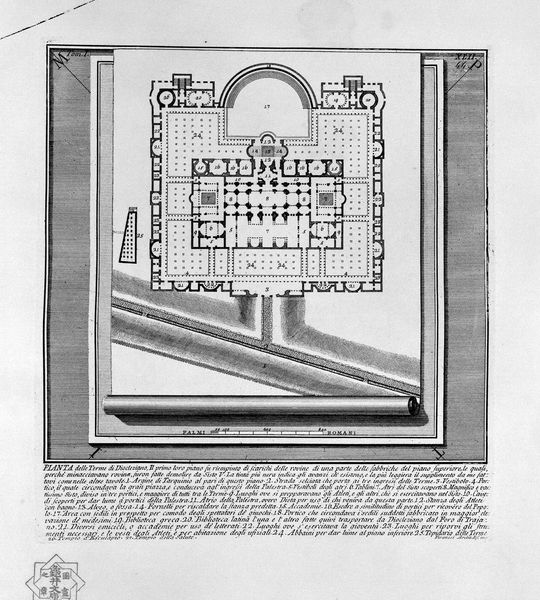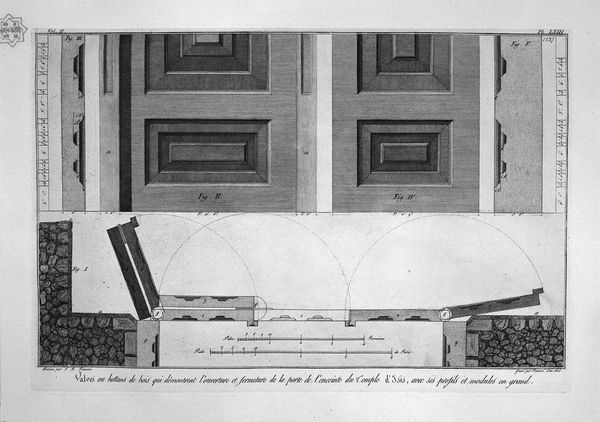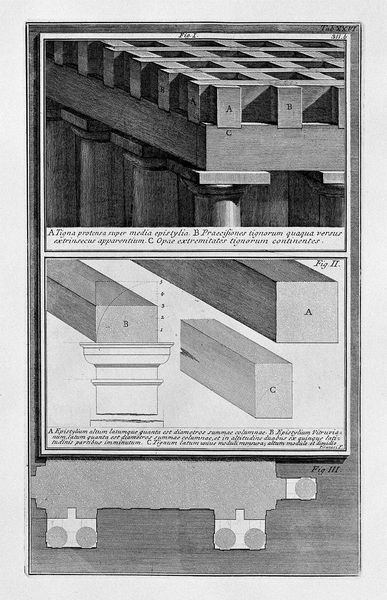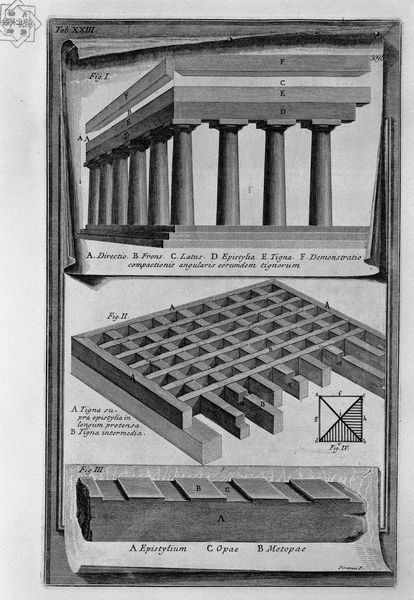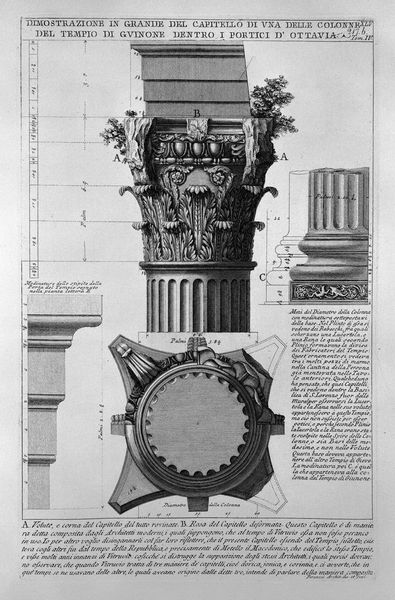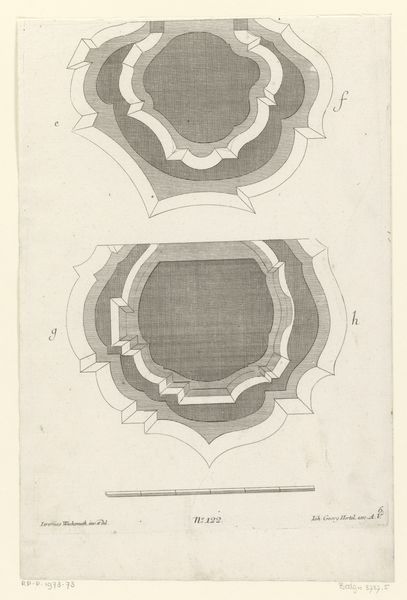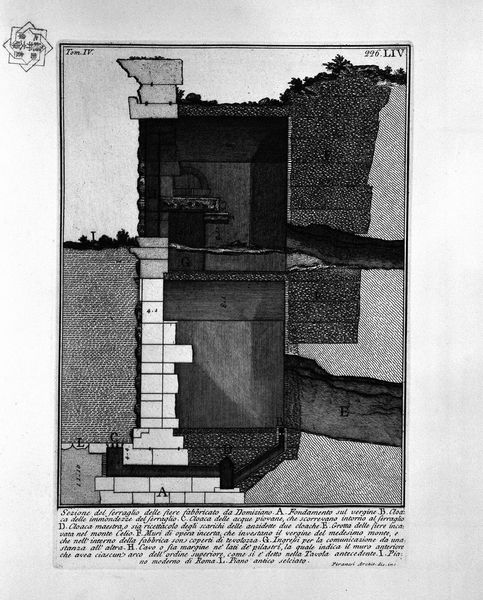
drawing, print, engraving, architecture
#
drawing
#
print media
#
neoclacissism
# print
#
perspective
#
geometric
#
history-painting
#
academic-art
#
engraving
#
architecture
Copyright: Public domain
Giovanni Battista Piranesi, around 1750 to 1778, created this print, likely an etching, of a column made from carefully joined stones. The image dissects the modes of production that were crucial to monumental architecture in the Roman era. The material is not just stone, but also the skilled labor required to quarry, carve, and assemble these massive blocks. Look at how Piranesi details the surfaces, textures, weights and joinery of each component. The column isn’t a seamless monolith but a composite of individual parts, each demanding precise craft. The visible marks, holes, and carved profiles speak to a long lineage of building practice. These techniques, passed down through generations of stonemasons, are as essential to the final form as the stone itself. The print lays bare the social context of construction, with its implied hierarchy of patrons, architects, and laborers. By emphasizing these material and process-oriented aspects, Piranesi challenges any purely aesthetic appreciation of ancient architecture. He reveals the immense effort required to realize such grand designs, prompting us to consider the human cost and ingenuity behind these lasting structures.
Comments
No comments
Be the first to comment and join the conversation on the ultimate creative platform.
